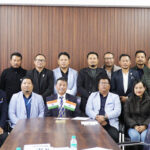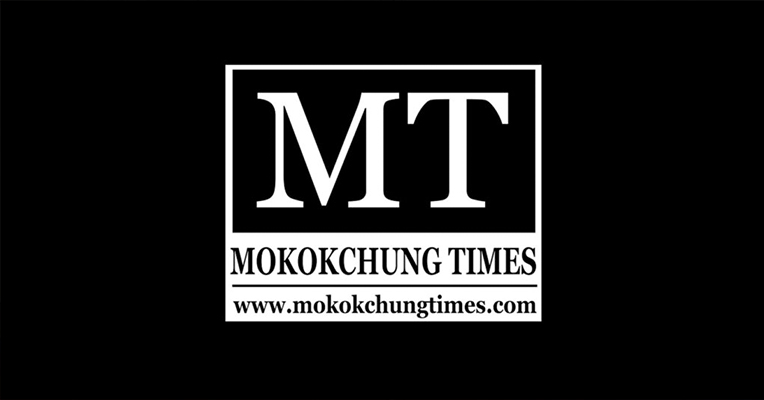Christian Medical College Vellore, Tamil Nadu, is the latest hospital to sign a memorandum of understanding (MoU) with the Government of Nagaland for Chief Minister Health Insurance Scheme (CMHIS), stating that empanelment will start from July 8, 2024.
CMHIS is implemented in convergence with the Ayushman Bharat Pradhan Mantri Jan Arogya Yojana (AB PM-JAY), a flagship program of the Government of India. The converged scheme is known as the “Ayushman Bharat Pradhan Mantri Jan Arogya Yojana- Chief Minister Health Insurance Scheme” or “AB PM-JAY CMHIS.”
While the government aims to revolutionize healthcare accessibility and quality in Nagaland, there is skepticism and confusion surrounding CMHIS.
To delve into the CMHIS in detail, MT conducted an interview with Imsuwapang Jamir, Data Entry Operator/District Implementing Unit in Mokokchung (DEO/DIU).
Why is money deducted from government job holders and pensioners?
“The money is not deducted from salaries. Every government employee is entitled to a medical allowance every month, and the money for CMHIS comes from there. For government employees, because money is deducted, this deduction provides coverage up to Rs. 20 lakhs. Non-government employees receive coverage up to Rs. 5 lakhs under the AB PM-JAY scheme,” clarified Jamir. It may be noted that the Ayushman Bharat Pradhan Mantri Jan Arogya Yojana previously covered a maximum of Rs. 5 lakhs for everyone, regardless of employment status.
“In a family where the husband works in a government job, everyone, including the wife and children, is entitled to Rs 20 lakhs,” added Jamir. ”Earlier, we used to have Ayushman Bharat. They are same. The only difference is that government employees are given Rs 20 lakhs privilege while non government employees are given Rs 5 lakhs privilege just like AB-PMJAY did.”
“Government employees are ensuring themselves with their money and hence their privilege is up to Rs 20 lakhs. For non-government employees, it is the AB-PMJAY so the privilege is only up to Rs 5 lakhs.”
What does the government do with the deducted money?
“The state government does not utilize the deducted funds,” clarified Jamir. “The employees’ money is deducted but the deducted money is looked over by Oriental Insurance Company. It is not kept by the state government.”
“Oriental Insurance Company is such a type of insurance company where they have a systematic value where the money collected from the employee will be decided on how and where to pay. The OIC will pay to those who have insured their life,” elaborated Jamir.
How do you respond to the allegations of discrepancies?
Responding to claims of discrepancies among patients, Jamir said, “There are two types of cards: Rs. 5 lakhs and Rs 20 lakhs. Rs 20 lakhs cards are processed smoothly in empanelled hospitals under CMHIS, but these 5 lakhs cards are from the central scheme AB-PMJAY and there, some discrepancies occur. I am not aware of the details because the payment and all is looked after by district coordinators, nodal officers and high ranking officials.
Can an Ayushman card holder apply for CMHIS?
Responding to this, Jamir said, “All the government employees and dependents are entitled for CMHIS (Rs 20 lakhs). So, those government employees, if you have the old AB-PMJAY card, you will have to delete or disable that one and make the new one (CMHIS) because you are already getting insured.”
However, he said, the public (non government employees) will have to make the Rs 5 lakh card.
“We are not discarding the previous Ayushman card but there is one big problem. The Ayushman Bharat card was made based on the socio-economic census 2011. But in that census, not all Naga populations were there. So, during that time, many non-local names were used. Now, when we take that card and go for treatment, the names do not match. At the same time, the Aadhar-Ayushman card link must be established. So, it depends a lot on whether the Ayushman Card and Aadhar are linked.”
Who can apply for CMHIS?
“Only indigenous inhabitants of Nagaland are entitled. People from other states must make it in their own state. Non locals, as long as they can produce their indigenous certificate, they are entitled,” he said.
Steps taken to make CMHIS inclusive
“We are trying to empanel everywhere but since this is a new scheme, it is a slow process,” admits Jamir, adding, “We have now created a general category after seeking clearance from the administration for those who have no ration card, Aadhar card etc.”
“We also now have open channels to claim for those who got treatment from November 2022 to December 2023 but costs were not covered despite card issuance.”
“Our main objective is to sensitize the people that it is a good scheme. We wish to reach out to every household and every individual assuming it is mandatory,” said Jamir.
“There are many that say it is not necessary but when you go to a hospital, the first thing they will ask is, do you have an Ayushman Card? So, it’s better to enroll while healthy than to rush during illness,” said Jamir.
Speaking on his attempt to make it more inclusive, he said, “So far, I have visited all 83 villages in Mokokchung district, all 18 wards in Mokokchung town; Mangkolemba and Changtongya headquarters. I’ve briefed 53 departments and over 80 Heads of Departments, along with meetings sponsored by ministers and MLAs. Mokokchung has reported no discrepancies so far, but I remain prepared for further sensitization.”
Jamir is a DEO/DIU stationed at CMO Mokokchung office, ground floor. This initiative falls under the Directorate of Health and Family Welfare, which includes the State Health Agency and the Nagaland Health Protection Society (NHPS). Under the NHPS, each district operates with a designated district operator under this structure.



